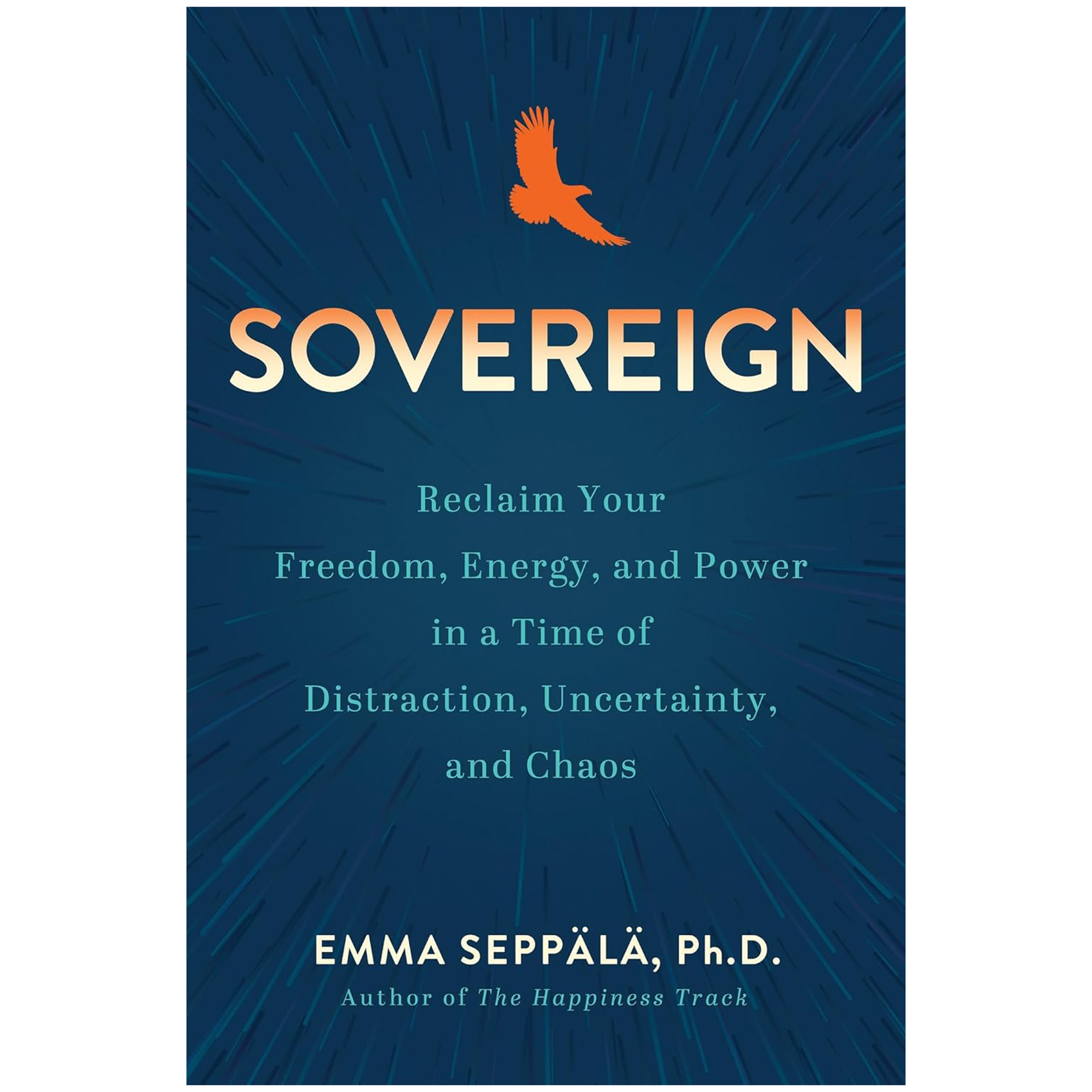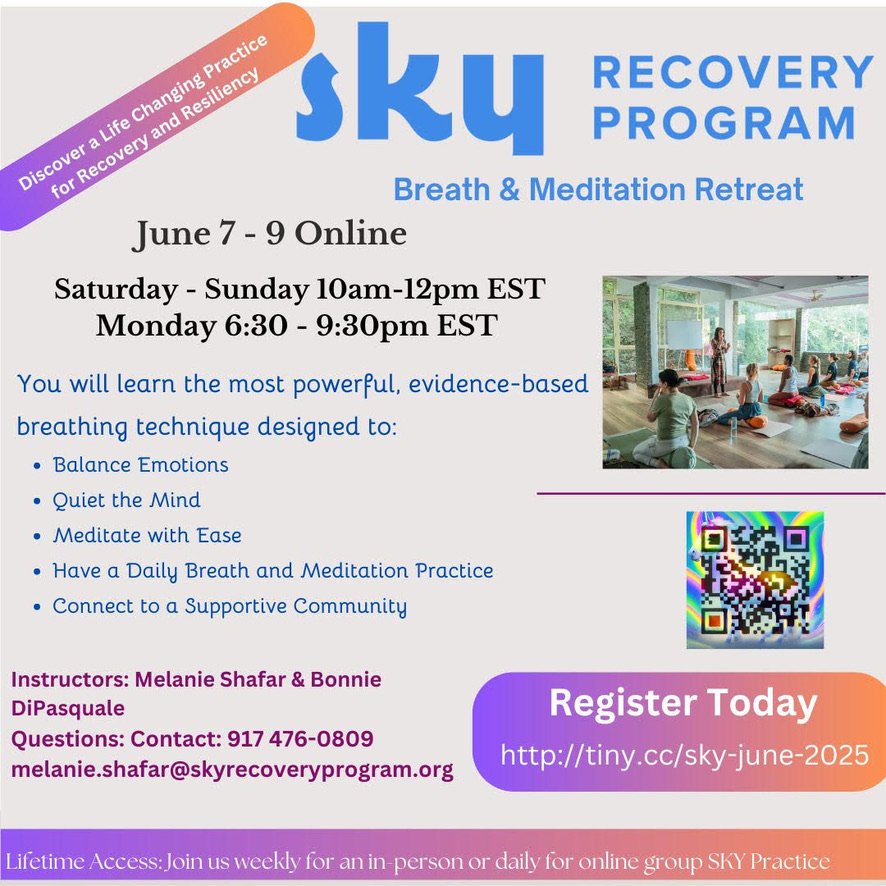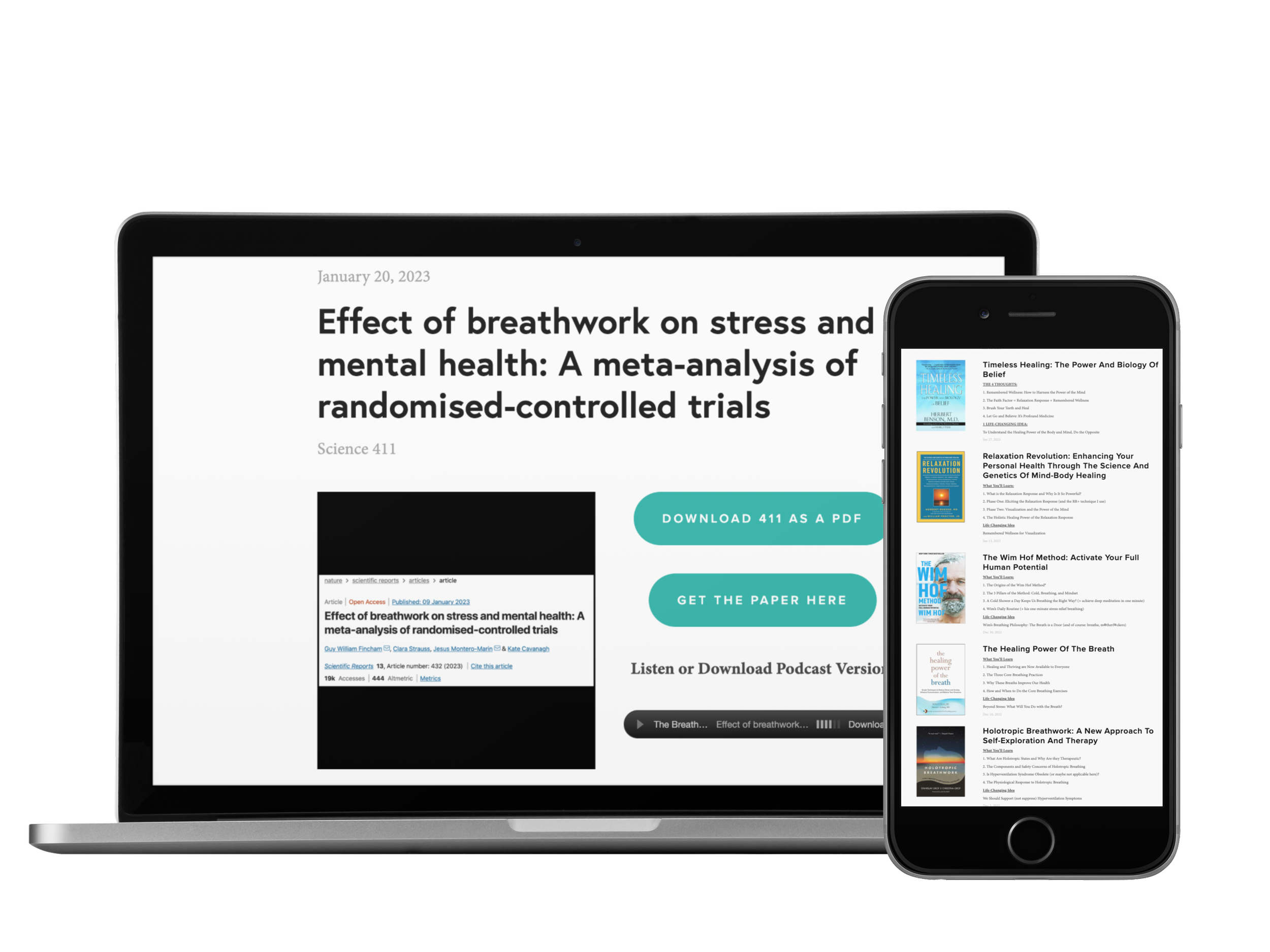Reading Time: 1 min 41 sec
I hope the next 20-ish breaths are the most nourishing of your day.
4 THOUGHTS
1. Two Separate Studies, Two Similar Outcomes
Two influential meta-analyses published two years apart showed that breathing interventions significantly lower stress & anxiety.
The 2021 analysis revealed that breathing decreases anxiety with medium to large effects (CBT usually produces small to medium effects).
The 2023 analysis found that breathing reduces stress, with effects statistically comparable to CBT, meditation, mindfulness, and acceptance-based therapies.
They’re both great reminders of how powerful the breath is for lowering stress and anxiety.
2. The Other 23.5 Hours of the Day
“The point of meditation is not just to have some pleasant experience during meditation, then come back to the same-old same-old. The real effects are experienced during the other twenty-three and a half hours of the day.”
- Dean Sluyter, Natural Meditation
Whether it’s meditation, breathing, yoga, or any other wellness practice, let’s remember that the real effects are experienced once we finish and take that new mindset out into the world.
3. How to be Nonjudgmental (hint: you probably can’t)
“So, when you hear a term like nonjudgmental, it’s really difficult to embrace the idea that it’s ever truly possible when you're alive. Instead, we should think about the concept of ‘not clinging onto judgments.’ The brain is constantly making the judgments, and the effort needs to be made to dissolve those judgments, which are really anticipations and expectations.”
- Daniel Siegel, MD, The Mindful Brain
Just a wonderful reminder that we are human, and so we will always make judgments. Thus, when we try to be nonjudgmental (in mindfulness, meditation, etc.), it’s really about “not clinging to judgments,” not “not judging at all.”
4. My Favorite Story (again)
“A disciple asks a Zen master: ‘How long does it take to be able to experience Awakening?’
‘Maybe 20 years,’ answers the master.
‘And if I am in a hurry?’ asks the disciple again.
‘In that case, it is 50 years,’ concludes the master.”
- Steven Laureys, MD, The No-Nonsense Meditation Book
A humorous, always-needed reminder on patience, which applies far beyond just “awakening” 😊
1 Quote
“Love will take you further than sheer effort ever will.””
1 GOOD BOOK
Sovereign by Emma Seppälä, Ph.D.
This is a great book filled with wisdom on taking control of and shaping our lives. It’s also got a ton of good information on the transformational power of breathing (and especially on the science of SKY breathing). Definitely a valuable read.
In good breath,
Nick Heath, T1D, PhD
“Breathing is the compound interest of health & wellness.”
Enjoy these posts? Donate to say thanks!
P.S. spooky season
Get One of My Digital Guidebooks
The Breathing App for Diabetes
This is the first program specifically made for people with diabetes to help manage their stress through breathing and mindfulness practices. In addition to the amazing program inside the app, we have some really neat things coming up, so sign up now!
Amazon Associate Disclosure
I’ve been recommending books for almost 6 years. Yet somehow, I just discovered that I could be an Amazon affiliate [face-palm]. In any case better late than never. Now, any Amazon link you click is an affiliate link. As an Amazon Associate, I earn from qualifying purchases. So, if you’d like to support my work, buying books through these links is helpful : )
* An asterisk by a quote indicates that I listened to this book on Audible. Therefore, the quotation might not be correct, but is my best attempt at reproducing the punctuation based on the narrator’s pace, tone, and pauses.










